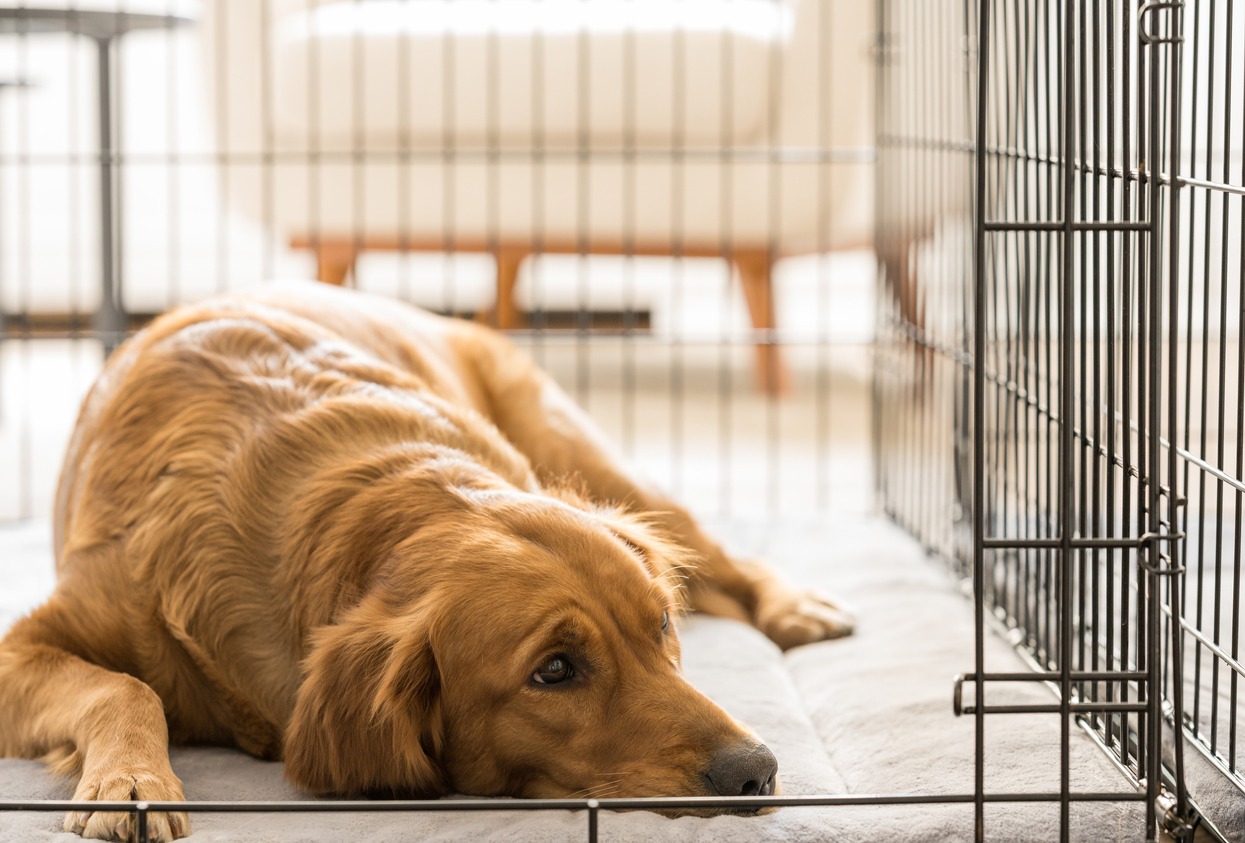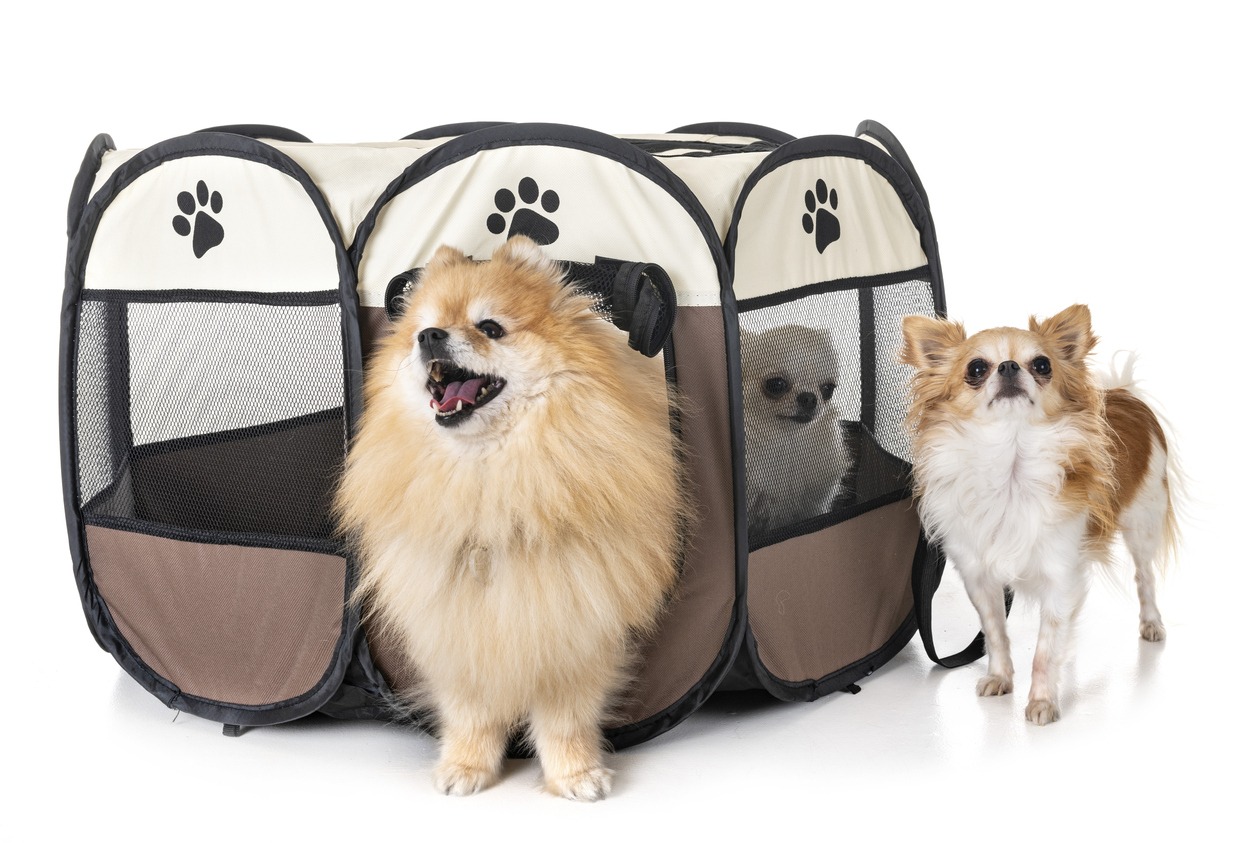Dog crates and kennels are essential tools for pet owners, providing numerous benefits for both training and safety purposes. These specially designed enclosures mimic a den-like environment, offering a secure space for dogs to retreat to and feel safe, similar to their ancestors in the wild.
By confining your dog to a crate, you can prevent accidents or destructive behavior when you’re unable to supervise them. It helps them understand that their crate is their personal space, where they can relax and have a sense of security. At the same time, crates are incredibly useful during travel, providing a secure and comfortable space for your dog in the car or on an airplane.
Choosing the right size and type of crate for your dog
Choosing the right size and type of crate for your dog is crucial when it comes to their comfort and safety. Just like humans, dogs also need their own personal space where they can feel secure and relaxed. A properly sized crate can provide them with a cozy den-like environment that they can call their own.
When it comes to selecting the size of the crate, it’s important to choose one that is just right for your pet. Your dog may feel cramped and uncomfortable in a crate too small for his size, while a crate that is too large may not provide the feeling of security that a properly sized crate can offer. Remember, dogs have a natural instinct to find a snug space to rest, so it’s essential to find the perfect fit.
There are various types of crates and kennels available in the market, each with their own set of pros and cons. Wire crates are popular due to their durability and ventilation, allowing for proper airflow.
Plastic crates, on the other hand, provide a secure and enclosed environment, which can be beneficial for dogs who prefer more privacy.
Soft-sided crates are lightweight and portable, making them convenient for travel. They are also more visually appealing than traditional wire crates and can easily blend into any home decor.
One of the major benefits of soft-sided crates is their comfort. These crates are typically made with soft materials, providing a cozy and secure environment for your dog. Some even come with additional features like cushioned flooring or mesh windows for proper ventilation.
Meanwhile, outdoor kennels provide a fantastic alternative to traditional indoor crates. These kennels offer dogs the opportunity to enjoy the fresh air and freedom of the outdoors while still remaining in a secure and controlled environment.
Outdoor kennels come in various sizes and designs, allowing you to choose the best fit for your dog and your outdoor area. They are typically made with sturdy materials like galvanized steel or chain-link fencing, providing durability and security. Some outdoor kennels even come with additional features like covered tops to protect your dog from the elements or attachable dog houses for added comfort.
For pet owners looking for a more spacious option, dog playpens can be a great alternative to traditional crates. These versatile enclosures offer plenty of room for your dog to play, stretch, and relax, while still ensuring their safety.
Dog playpens come in various sizes and materials, allowing you to choose the best fit for your dog and your living space. They can be easily assembled and disassembled, making them perfect for indoor or outdoor use. Some playpens even come with additional features like doors or removable panels, providing flexibility and convenience.
If you’re looking to incorporate your dog’s crate seamlessly into your home decor, crate furniture might be the perfect solution. These innovative pieces of furniture are designed to serve a dual purpose – acting as both a functional dog crate and a stylish addition to your living space.
Crate furniture comes in various styles, from end tables to console tables, allowing you to choose the design that best fits your home aesthetic. These crates are typically made with durable materials, ensuring longevity and security for your dog. Some even come with additional features like removable trays for easy cleaning or doors that can be left open for your dog to come and go as they please.
While crate furniture can be a bit more expensive compared to traditional crates, the added functionality and aesthetic appeal make it a worthwhile investment for pet owners who prioritize both style and comfort.
Measuring your dog for the perfect crate size is a crucial step in the process. To determine the correct dimensions, measure your dog from the tip of their nose to the base of their tail, and from the top of their head to the ground. Add a few inches to these measurements to ensure your dog has enough room to stand up, turn around, and stretch comfortably inside the crate.
Introducing your dog to their crate
Crate training provides numerous benefits for both you and your dog. It offers a designated safe space for your dog to retreat to when they need some alone time or feel anxious. Additionally, crate training aids in house training by teaching your dog to hold their bladder and bowels until they are taken outside. It also helps reduce anxiety in dogs by providing a sense of security and routine.
Start by placing the crate in a quiet and familiar area of your home. Make the crate inviting by lining it with a soft blanket or bedding and adding some toys or treats inside. Encourage your dog to explore the crate by placing treats near the entrance and allowing them to approach the crate at their own pace. Reward your dog with praise and treats whenever they show interest in the crate.
Next, begin gradually increasing the duration of crate time. Start with short periods of time, such as a few minutes, and gradually work your way up to longer durations. Make sure to provide plenty of positive reinforcement and rewards during this process. Never force your dog into the crate or use it as a form of punishment, as this can create negative associations with the crate.
During the crate training process, you may encounter some common challenges.
Your dog may whine, bark, or resist entering the crate. It’s important to remain patient and consistent throughout these challenges. Ignore any attention-seeking behaviors, as giving in to them will only reinforce the unwanted behavior. Instead, reward your dog for calm and quiet behavior when they are in the crate.
If you find that your dog is struggling with crate training, don’t hesitate to seek professional help from a certified dog trainer or behaviorist.
Using a crate for travel or emergencies
Crate training for travel or emergencies is crucial for the safety and well-being of your dog. A crate provides a secure and familiar space where your dog can feel calm and protected, even in unfamiliar surroundings. It reduces the risk of injury or escape during car rides or chaotic situations, allowing you to focus on the road or addressing urgent matters.
When using a crate for travel or emergencies, it’s vital to prioritize safety. Ensure that the crate is securely fastened in your vehicle to prevent it from shifting or tipping during sudden stops or accidents.
If you’re traveling by plane, check with the airline’s specific requirements for crate dimensions, materials, and documentation. Always provide your dog with access to water, and never leave them unattended for extended periods.
Cleaning and Maintaining Your Dog’s Crate
Keeping your dog’s crate clean and well-maintained is not only essential for their health and comfort, but it also ensures the longevity of the crate itself. In this section, we will discuss the importance of regular cleaning and maintenance, along with some helpful tips and tricks to make the process easier.
To effectively clean your dog’s crate, start by removing any bedding or accessories and shaking them outside to get rid of loose dirt and debris. If the bedding is machine washable, follow the manufacturer’s instructions for cleaning. For non-washable bedding, use a pet-friendly stain and odor remover to spot clean any stains or odors.
Next, thoroughly vacuum the crate to remove any loose hair or dirt. Pay extra attention to the corners and crevices, as these areas tend to accumulate more dirt. If your vacuum has a hose attachment, use it to reach those hard-to-reach spots. Alternatively, you can use a damp cloth or sponge to wipe down the interior surfaces of the crate.
Choosing the right cleaning products and materials is important to ensure the safety of your dog. Avoid using harsh chemicals or cleaners that may leave residue or irritate your dog’s skin. Instead, opt for pet-safe cleaning products that are specifically designed for use around animals. These products are gentle yet effective in removing dirt, stains, and odors.
In addition to regular cleaning, proper maintenance of your dog’s crate is essential for its longevity and hygiene. Make it a habit to inspect the crate regularly for any signs of wear and tear, such as loose screws or broken wires.
To maintain hygiene, consider using a crate liner or tray that can be easily removed and cleaned. This not only protects the crate from any accidents or spills but also makes cleaning a breeze. Provide your dog with appropriate chew toys or bones to help prevent them from chewing on the crate itself.
Conclusion
Dog crates and kennels provide a safe and secure space for our pets, aiding in their training, comfort, and overall well-being. By understanding the different types, sizes, and features available, you can choose the perfect crate or kennel that meets your dog’s specific needs. With the right crate or kennel, you can create a sanctuary for your dog, a place they can call their own, and a source of comfort and security that will strengthen the bond between you and your beloved pet.




